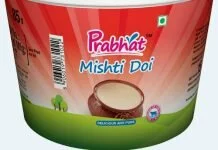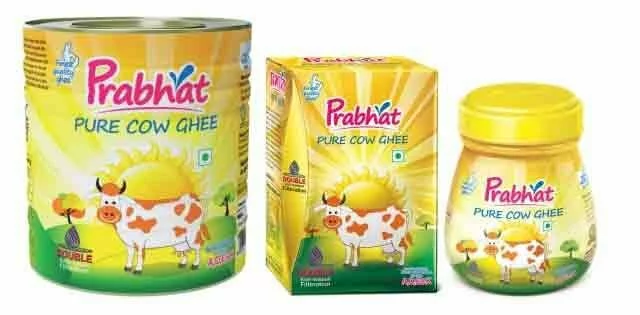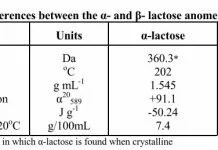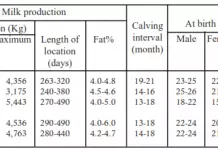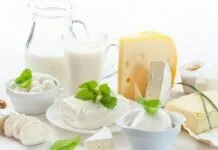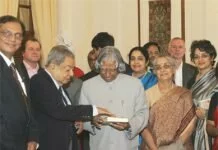The story of yogurt
When I was a child, we lived in a remote village in saurashtra, and we kept a cow in the house. I had seen my mother pour some milk in a vessel day after day and allow it to ferment. Once a week my grandmother or my mother would churn it for about an hour or two.
Sometime she will make me help her pull the rope left and right to churn. She would stop every few minutes and inspect the milk, skim out the cream that would have got separated from the milk. Later she would pour some water into the vessel and continue churning till most of the cream had been separated and taken out. She would later boil this separated cream and make ghee from it and the remaining mixture in the vessel became buttermilk, which we would use as a drink, with our meals. In that day and age, we gave buttermilk to our neighbors for free and equally, receive it from them when they had some extra. I had also seen that many in my family used buttermilk to wash their hair like we would use shampoo today!
Because we had one cow and seven siblings, rarely would any milk be left to make yogurt or curd.
But when I moved to the city for my higher education, I found that people used to eat curd with rice, as raita or as desert with sugar and sometime with snacks. I also saw them eating new things like “Dahi wada, Dahi Bhalla” as afternoon or late evening snack. It was very common to add some culture in the surplus milk left at the end of the day and convert it into Dahi, as most housewives knew how to make curd at home! Fresh curd was always considered healthy and protective especially if one intended to travel or eat out. Women in the household would customarily exchange culture from curd, with neighbors to maintain its potency and efficacy.
Whenever we used to have marketing review meetings at GCMMF (AMUL) in 80s and early 90s, I would often hear people say that in India every housewife knows how to make curd hence their is no need to market curd.
I wasn’t convinced though and I conducted market research in 1992. More than 30% housewives surveyed, recommended that Amul should launch packaged curd. While I did expect to see a positive response from the market, I was surprised with the extent and potential. Later, during my visits to Europe in France and Germany I saw several dairies marketing huge variety of set and stirred yogurts.
Once while having breakfast with the Managing Director of Sabar dairy, he praised the quality of curd served at the dairy guesthouse. That struck a cord and it reminded me of research findings and I prompted him to start manufacturing of Curd at the dairy.
We were already making Srikhand, which is a sweetened probiotic curd since the 1980s but we had skipped plain curd! So in 1997 we launched the commonly known brand called – “Masti Dahi” in Ahmedabad as a pilot. From my other blogs you may have read that by this time, we had decided to launch milk in Delhi market and we were already marketing milk in Mumbai. To support this strategy, we therefore had decided to decentralize packaging and marketing of fresh milk and products such as curd, ice creams, buttermilk and lassi. Hence launch of Masti Dahi was though small but significant part of a grand design.
I was also aware that AMUL alone cannot and will not be able to cater to the demand across the nation, and so I knew that all 200 dairy cooperative plants will have to work in harmony, pack and market curd pan-India. That would be the most cost effective and sustainable proposition to allow us to maximize the volume. Hence we allowed all dairy cooperatives to replicate our installation, recipe and technology.
Indian market being so different than European market, we decided to launch, curd in pouches, similar to milk-pouches, thereby further optimizing the manufacturing and supply chain, while leveraging the unique distribution systems of cooperatives, unlike most multi-nationals. Our fundamental strategy was to make people move from loose curd sold by the unorganized sector to packaged curd – while making it affordable, available and at superior quality. The motto of superior quality at lowest sustainable price, had always built markets for us.
Thus by the time our global competitors woke up, we had a nationwide market and almost all dairy cooperatives had launched Packaged Dahi (Curd) and buttermilk. Recently I read somewhere that all India organized curd market in the year 2010-11 was estimated to be around 900,000mt/year with more then 90% share with Local cooperative or Indian companies. Multinationals, hardly have less then 10% market share in this category.
By 2015, this market is projected to cross 1.5million tons pa – which is a significant growth rate in the category making it one to seriously contemplate competing for.
In India Dahi or curd is largely used for table use. We consume it in breakfast, lunch or dinner. Curd is traditionally consumed almost daily or at least few times a week. Out of home curd is served in almost all hotels and restaurant as meal accompaniment. Sweetened curd is consumed as desert or as Srikhand in homes.
Fresh curd is known to keep digestive systems in order and Indians do not need education on how healthy it is! What is needed, however; is to make it available in convenient packaging for on the go consumption or bigger bulk packs for institution segment or flavored, fruitier curd to enhance out of home use. All this while making it affordable so that be it in cup or pouch, people of all class can consume it.
While this is not new to industry, there is a lingering question about what is missing? Where is a gap in the market?
Buttermilk and lassi, are rich in proteins, calcium, minerals and micro nutrients. Their bio availability is extremely high in this form than when consumed as expensive capsules and tablets! These drinks are in reality quite “cool” and would make life healthier and hence truly more fun.
Packaged curd and flavored or fruity yogurt has a huge demand building up. In days ahead probiotic advantage of curd or yogurt, which is low calories, low fat, with naturally good bacteria will drive the health conscious new generation to go for it – creating head on competition for carbonated drinks or even sugared juices.
Tremendous value addition is in offing in this category, to make it not only huge table use health product, but also healthy, natural, tasty, out of home food and drink in very near future. ‘Amul Masti butter milk’ , ‘Amul lassi’, ‘Amul probiotic’ lassi and butter milk launches of 2002-2005 are stars on horizon
There is clearly a position that most companies haven’t looked into – that is making our communication and promotion of this product category more “cool”. Combined with the right product creativity, and promotion – these products can compete with the well-known soft drink brands. Question is – is there is someone in the market willing to look beyond the run-of-mill business, and explore and tap this potential? Innovation has no boundaries – you just need to look around!
(Hint: If you are keen to go a step outside the comfort zone, here is a hint: What has been one of the best product & delivery model innovation in the soft drink industry thus far?)
Mr. BM Vyas took-over as Managing Director of AMUL Co-Op. during expansion and opening up of the Indian economy & globalization in the 90s. In order to take on the competition, he championed Total Quality Management across the dairy value chain in Gujarat. Within a span of 16 years at helm of AMUL, he increased sales of AMUL to eight-folds (from Rs. 9.8 billion to Rs. 80 billion). He steered AMUL to be Asia’s largest fresh Milk processor or No. 1 Dairy Brand in India as well as in Asia Pacific, as per Media Magazine Survey, 2009. Under his leadership; AMUL launched innovative and special Dietary products like Probiotic & Sugar Free Ice Cream, Probiotic buttermilk for the first time in India.

Comments
comments


